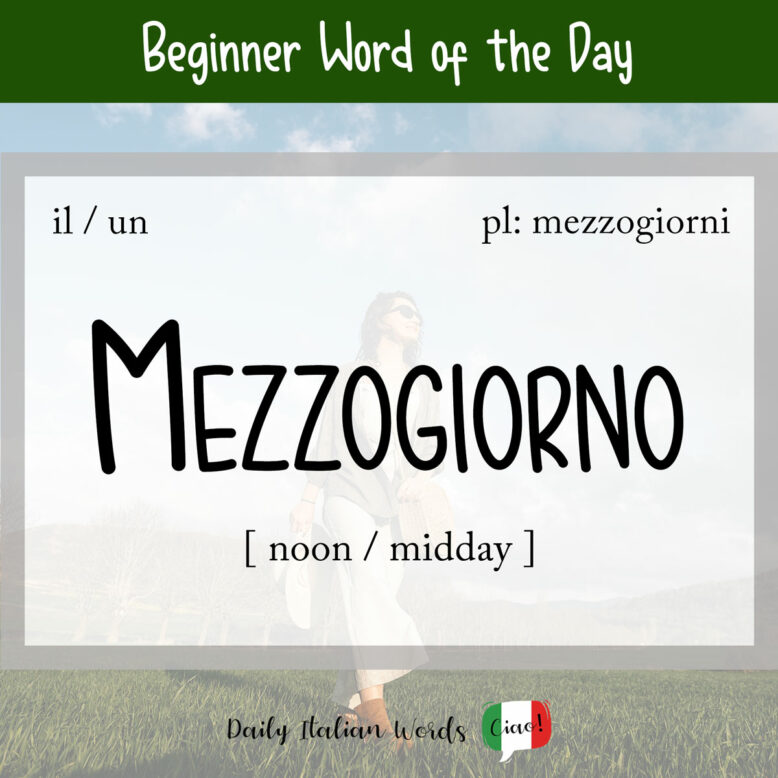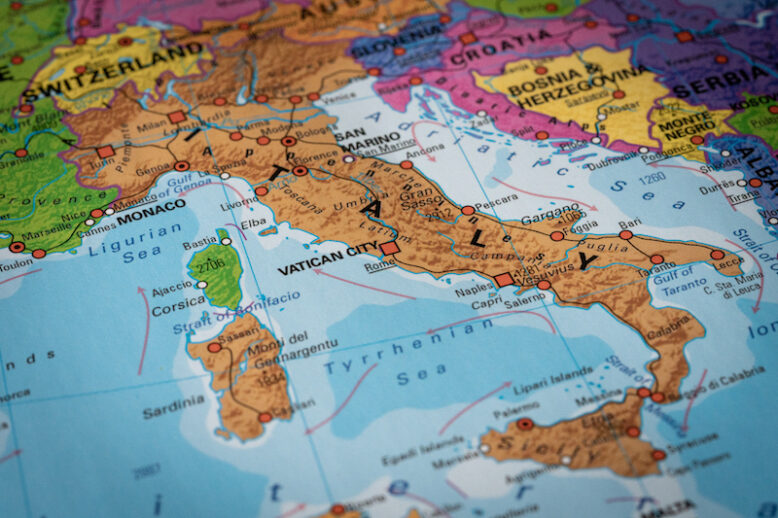We already discussed mezzanotte (midnight) in a previous post, so now it’s time to take a look at the other end of the temporal spectrum, mezzogiorno (noon / midday).

Mezzogiorno is the combination of the words mezzo (half or halfway) and giorno (day). It is a masculine noun, so it takes the following definite and indefinite articles:
- il mezzogiorno
- i mezzogiorni
- un mezzogiorno
- (dei) mezzogiorni
La lezione comincia a mezzogiorno in punto.
The lesson begins at noon on the dot.
In situations where we might say “twelve” in English, Italians often continue to use mezzogiorno. For example:
- suonare mezzogiorno = to strike twelve
- mezzogiorno e un quarto = quarter after twelve
Quando è suonato mezzogiorno, Lucia è uscita per fare una passeggiata.
When the clock struck twelve, Lucia went out for a walk.
Here are some common time phrases you might hear that contain mezzogiorno:
- mezzogiorno e mezza = 12:30 p.m.
- mezzogiorno e un quarto = 12:15 p.m.
- mezzogiorno meno un quarto = 11:45 a.m.
- mezzogiorno meno cinque = 11:55 a.m.
- un minuto a mezzogiorno = 11:59 a.m.

In Italian, a casual and brief way to talk about 12:30 a.m. or p.m. is by using the term mezza. The specific mezza you’re talking about would, of course, depend on the context.
Ci vediamo alla mezza, ok?
See you at noon / midnight, ok?
An second translation for mezzogiorno in Italian is south, or south-facing.
La mia stanza è esposta a mezzogiorno.
My room faces south.
Interestingly, mezzogiorno, or more specifically il mezzogiorno d’Italia, is also used to refer to the south of Italy. It encompasses the administrative regions aligned with the historical Kingdom of the Two Sicilies. These regions include Abruzzo, Apulia, Basilicata, Calabria, Campania, Molise, and Sicily. Despite its cultural, linguistic, and historical differences from the other regions, the island of Sardinia is often included in the Mezzogiorno for statistical and economic reasons.
You might wonder, why the term “mezzogiorno“? Well, it’s a reference to the strength and location of sunlight at midday in the southern part of the Italian peninsula. The term gained popularity after the annexation of the Bourbon Kingdom of the Two Sicilies by the mainland-based Savoyard Kingdom of Sardinia, and the unification of Italy in 1861.
Il nuovo partito politico continua a crescere, soprattutto nel Mezzogiorno d’Italia.
The new political party continues to grow, especially in Southern Italy.

Heather Broster is a graduate with honours in linguistics from the University of Western Ontario. She is an aspiring polyglot, proficient in English and Italian, as well as Japanese, Welsh, and French to varying degrees of fluency. Originally from Toronto, Heather has resided in various countries, notably Italy for a period of six years. Her primary focus lies in the fields of language acquisition, education, and bilingual instruction.


